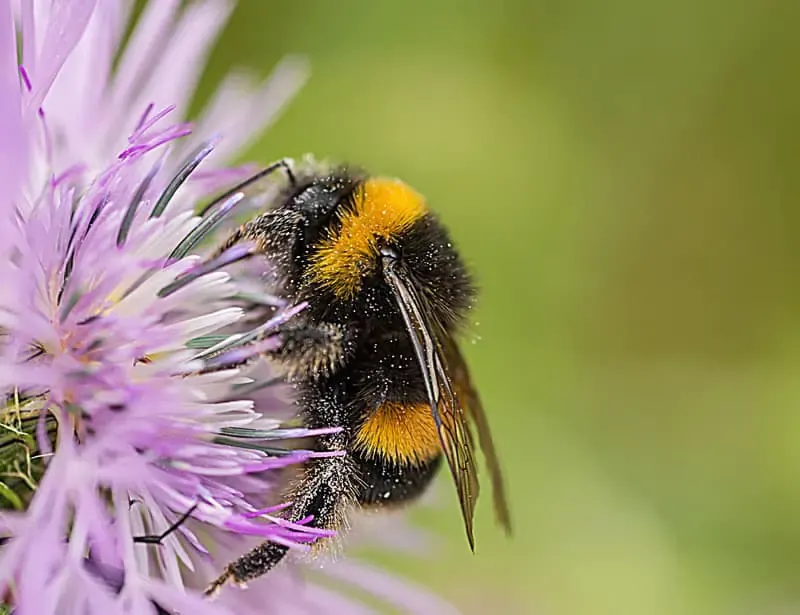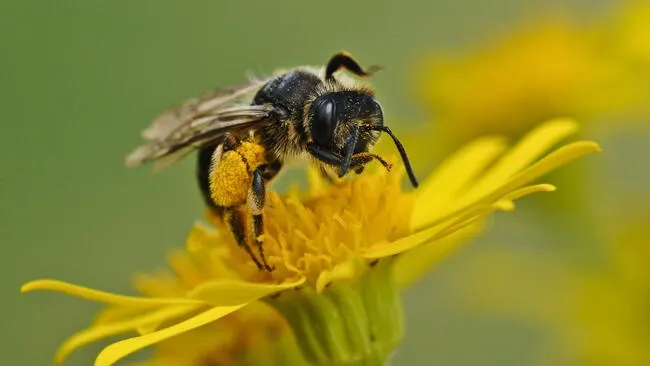50 Buzz-Worthy Facts About Bumblebee

Bumblebees are some of the most recognizable and beloved insects in the world. With their fuzzy black-and-yellow bodies, gentle buzzing, and critical role in pollination, bumblebees are vital to both ecosystems and agriculture. While they may seem simple at first glance, bumblebees are complex creatures with remarkable abilities, behaviors, and adaptations. In this article, we’ll uncover 50 fascinating facts that shed light on these tiny but mighty pollinators.
Physical Characteristics and Biology
- Bumblebees are large, fuzzy bees from the genus Bombus, known for their soft hair (setae) and robust bodies.
- They have four wings—two forewings and two hindwings—that beat rapidly to keep them airborne.
- Their wings flap about 130–200 times per second, producing their distinctive buzzing sound.
- Bumblebees have compound eyes that allow them to detect patterns and polarized light.
- They possess a long, specialized tongue (proboscis) for drinking nectar from deep flowers.
- Bumblebees can be black and yellow, but some species show orange, white, or red coloration.
- Females (workers and queens) can sting multiple times, unlike honeybees, whose barbed stingers detach.
- Male bumblebees do not have stingers and cannot sting.
- A typical bumblebee is about 0.4 to 1 inch long, depending on the species.
- They have five eyes—two large compound eyes and three small simple eyes (ocelli).
Behavior and Communication
- Bumblebees don’t dance like honeybees; instead, they communicate using scent and movement.
- They can regulate their body temperature, allowing them to fly in colder conditions than most bees.
- Bumblebees shiver their flight muscles to warm up before flying.
- They use buzz pollination—vibrating flowers to release pollen, especially useful for tomatoes.
- Bumblebees can learn from each other, such as how to open complex flowers.
- They leave scent trails to mark flowers they’ve already visited.
- They can recognize human faces—a sign of impressive visual memory.
- Bumblebees are generally non-aggressive unless their nest is threatened.
- Their buzz pitch changes when they’re annoyed or alarmed.
- Bumblebees can remember which flowers are more rewarding and avoid low-nectar ones.

Nesting and Lifecycle
- Most bumblebees live in small colonies—often 50 to 500 individuals.
- Colonies are usually built in underground burrows, compost heaps, or grassy tussocks.
- A bumblebee colony begins with a single queen emerging from hibernation in spring.
- She lays eggs and raises the first batch of workers on her own.
- Once workers are mature, the queen remains in the nest and focuses on egg-laying.
- Colonies last only one season; only new queens survive the winter by hibernating.
- Male bumblebees are produced toward the end of the season for mating purposes.
- After mating, males die quickly, while queens seek safe spots to hibernate.
- Bumblebee eggs hatch into larvae, which are fed by workers and go through complete metamorphosis.
- Their entire colony cycle is typically only 3–5 months long.
Ecological Role and Pollination
- Bumblebees are essential pollinators of both wild plants and crops.
- They are better pollinators than honeybees for certain crops, like tomatoes, blueberries, and peppers.
- Their ability to fly in cold, wet, and windy conditions makes them valuable in diverse climates.
- Some plants depend entirely on bumblebees for reproduction.
- Bumblebee pollination increases crop yields, especially in greenhouses.
- They can cover vast areas—over 1 km from the nest—to forage.
- Bumblebees often forage in flower constancy, sticking to one species during a foraging trip.
- Some bumblebees cheat by nectar robbing, biting flowers to access nectar without pollinating.
Species and Distribution
- There are about 250 species of bumblebees worldwide.
- Most species are found in northern temperate climates, especially in Europe and North America.
- The Buff-tailed bumblebee is one of the most common in Europe.
- The American bumblebee (Bombus pensylvanicus) is declining in parts of its range.
- The Arctic bumblebee (Bombus polaris) can survive near-freezing temperatures.
- Some species are mimics of other bees or wasps for protection from predators.
Conservation and Threats
- Bumblebee populations are declining worldwide, due to habitat loss, pesticides, disease, and climate change.
- Neonicotinoid pesticides have been linked to poor navigation and colony collapse.
- Bumblebees are especially vulnerable to loss of wildflower-rich meadows.
- Climate change can shift flowering times, causing a mismatch in food availability.
- Some conservation efforts include wildflower planting, pesticide regulation, and nest box installation.
- Protecting bumblebees also supports entire ecosystems, as they are keystone pollinators.

Conclusion
Bumblebees are more than just buzzing insects in your garden—they are crucial ecological players, equipped with amazing physical abilities, complex social lives, and incredible resilience. As pollinators, their impact is immense, and learning about them helps us appreciate and protect these fuzzy champions of nature. Whether you’re a gardener, farmer, or just curious about insects, knowing more about bumblebees is the first step toward ensuring their survival.



